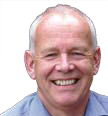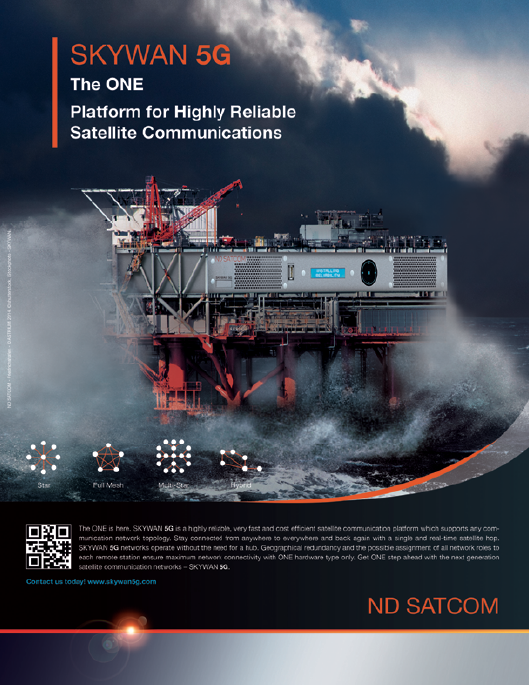Over recent years, there has been a great deal of focus on the implementation of Carrier ID, in part, because it is an extremely effective tool for mitigating interference, by pinpointing the source quickly.
That said; it is all too easy to forget that it is just a single piece of the interference puzzle and there are many other initiatives, technology and processes being developed and refined just out of the limelight. This article will look at those tools and developments and see how they can help the industry.
Improved Detection + Monitoring Technology
IRG is very much focused on improving technology to combat satellite interference, and there have been many technology improvements over the past year, especially relating to detection and monitoring.
According to Roger Franklin, CEO, Crystal Solutions: “Over the last year, a lot of the focus has been on Carrier ID, and therefore the main technological advancements are currently around better CID transmission, detection, and resolution technology.” At Satellite 2014, Crystal Solutions launched its CID Detection System, which enables users to verify they have the correct ID allocated to their carrier. It will also interface with the new CID database currently being built, which will be managed by the Space Data Association (SDA). This will enable operators and access centers to automatically extract any given ID and populate the database using this system.
The system will also interface with the new CID database currently being built, which will be managed by the Space Data Association (SDA). This will enable operators and access centers to automatically extract any given ID and populate the database using this system.

Another company active in the control and monitoring of interference instances is INTEGRASYS. Alvaro Sanchez, Sales and Marketing Manager, INTEGRASYS, explained that the system is able to analyze the detail, record and playback any alarms as well as demodulate the interference instances, which are being measured. “This capability allows the operator to have the most accurate measurements that they could have to be able report the interference quickly via email,” Sanchez said.
INTEGRASYS is heavily focused on VSAT interference. This is an area which has caused much speculation over recent months. It is estimated that more than 45 percent of interference comes from VSAT burst mode systems. However, the VSAT industry is uncertain whether Carrier ID is the correct solution. Therefore, finding other ways to combat interference for VSAT companies is key.
An example of this is INTEGRASYS’ Satmotion Pocket solution that gives VSAT operators the ability, via a smartphone, to measure the transmitted carrier (Co-polar), the Cross Polar and Adjacent Satellite Interference, enabling the operator to minimize the problems by rotating the feed or by slightly moving the antenna.
SAT Corporation, a leading provider of RF Interference Detection, Geolocation, and other RFI mitigation solutions, has been another major player in reducing interference. SAT Corporation has a comprehensive product suite that supports satellite operators and ensures they are able to provide the best service quality possible, including the capability of being able to quickly detect and reduce satellite interference.
Indeed, SAT products and services are used by 90 percent of the world’s largest satellite operators in more than 57 countries to help mitigate costly RF interference events. According to Greg Caicedo, President, SAT Corporation, “Identifying and reacting to these events quickly ensures satellite operators provide the best quality of service to their customers.”
SIECAMS is a fully integrated Carrier Monitoring and Geolocation tool developed and offered by Siemens Convergence Creators. Siemens has also implemented a dedicated foreground mode for Adjacent Satellite Interference Measurement, which greatly supports operators in their investigation of these events. Kevin Haymes, Director of Global Sales, Space, Siemens Convergence Creators, said, “Siemens has been at the forefront of interference reduction for almost a decade with our industry leading SIECAMS products.”
Improved Geolocation Technology
At IRG, our next big focus is around improving Geolocation technology, tools, and standards. There are some major players, such as SAT Corporation, Siemens and Zodiac Aerospace, already doing some great work in the Geolocation field, and we are working with them to help make it even better.
Kevin Haymes, Director of Global Sales, Space, Siemens Convergence Creators, said, “CID is a first important step, but we at Siemens realize that we cannot stop there. We are working alongside the ITU and IRG to implement a Geolocalization output standard so that intentional interference can be readily addressed by regulatory authorities worldwide.” He also exclusively told IRG that Siemens is nearing the release of a wholly new and novel technology that will obviate the need for the use of a nearby satellite for interference localization. This will be previewed at major industry shows in the coming months.
Greg Caicedo, President, SAT Corporation, added, “Protecting satellite bandwidth by quickly identifying and accurately Geolocating the causes of costly interference helps reduce the impact of RFI. Each of the initiatives aid in mitigating the effect of interference, but there isn’t a
single solution for this issue. There are some interesting theories as to
how to mitigate RFI coming down the line over the next few years.“
Prevention Is Better Than The Cure
It is widely regarded that, although reactive initiatives are important, preventative measures are vital and more attention needs to be paid to them. Systems and technology that prevent human errors are an important component to reducing and eliminating RFI. I have provided suggestions and guidance to the VSAT Working Group about creating smarter hub systems that should be able to identify remote sites that have degraded performance over time.
For example, when the average clear-sky transmit power for a remote site drifts higher, that remote site is not performing as it should. The hub can conclude that power is being robbed due to retransmission of FM or GSM signals or the remote site has become mis-pointed.
SAT Corporation’s Greg Caicedo also feels preventative measures are key. “Much of RFI is caused by accidental operator error and poor installation of VSAT terminals. Working toward equipment and installation standards would help alleviate the headaches accidental RFI causes.” Greg also believes training has an important part to play. “Human performance is something that is often overlooked in reducing RFI. Better training of operators would allow for Level 1 operators to do more to mitigate the interference before escalating the problems to Level 2 operators.”
For Siemens’ Kevin Haymes, learning from incidents is also important for future prevention. “Perhaps IRG, in conjunction with SDA, could store data pertaining to certain incidents of concern in order to learn more about the nature of these serious incidents and to teach operators to more readily identify such. It will become essential that monitoring systems have direct access to the SDA.”
Measurement is also important, according to INTEGRASYS’ Sanchez. “Measuring interference is essential; for example, satellite operators must monitor their satellites to measure if the transponder plan matches the real communication, then measure any forms of interference that may be affecting that transponder, and report to the customer or other satellite operators to find the source. Also the broadcaster and service providers should provide some basic monitoring capability of their carriers to know if they have an interference or problem and whether the service is degraded or not, then report to the satellite operator with recorded measurements.”
Future Technology
There are a number of exciting developments in the pipeline for Carrier ID and Geolocation, which I anticipate to be the next major advancement area, and there are other new technology innovations already on the horizon.
Alvaro Sanchez believes that the industry should simulate communication and interference scenarios before selecting beams, coverage and antenna sizes. Such a procedure would minimize interference effects and, perhaps, allow all the time to improve the satellite service area through ITU.
According to Roger Franklin, other preventative initiatives that will be gaining in popularity involve smarter transmission systems that can prevent human errors. These systems will be able to understand the potential for conflicts, require closed-system authorization before transmitting, and detect inaccurate antenna pointing. He also believes that improved filtering capability should become available that will enable a receiver to filter out unwanted RF signals so it can demodulate the desired RF signal.
Kevin Haymes believes the advent of more Ka-band uplink spot beams and steerable beams should alleviate some instances of interference. He added, “Looking to the horizon, Q-band on top of Ka-band will provide even more throughput and will likely result in less expensive solutions.”
Many manufacturers have improvements to mitigate interference on the horizon. Siemens will be rolling out advancements to its standard ILS capabilities, improving accuracy in detection. INTEGRASYS intends to add capabilities to its product line-up that include Carrier ID support. Crystal Solutions has a patent for a system that looks for, and prevents, transmission conflicts from two or more Earth stations that are connected to the system.
The Next Steps
We have achieved so much over recent months, but there is still so much more to be completed. As I have said many times, we need to achieve widespread implementation of Carrier ID across the globe. We also need to improve Geolocation tools and processes. These are just the basic needs.
Moving forward, we need better automation and intelligent control, something all of the aforementioned companies are involved in instituting. These types of systems will help prevent errors before they occur. Above all, we need the continued support from across the entire industry and further engagement from users—after all, they are the ones that will see and experience the benefits of
interference-free communications!

About the author
Martin Coleman started Colem as an engineering services and design consultancy. Colem now supplies a unique satellite and broadcast control system design based on the industry standard GE Proficy iFIX Process Control platforms. Martin has worked with numerous broadcasters and satellite operators, improving their process control, including BSkyB, Reuters and YLE. Prior to setting up Colem, Martin was involved in the engineering and operations of various BT satellite projects for Madley and Goonhilly ground stations in the UK. His background is both satellite and international telecommunications.
For further information regarding IRG, please visit http://satirg.org/


